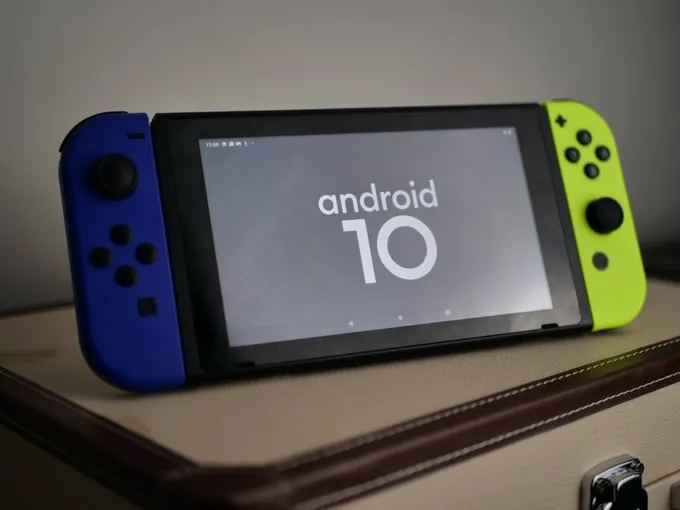
After the mobile OS unofficially arrived on the portable console in mid-2019, Android 10 is now on the Nintendo Switch courtesy of another unofficial LineageOS 17.1 port.
This version of Android 10 for Nintendo Switch is actually based upon the LineageOS 17.1 build for the popular Nvidia Shield TV. Naturally, this is a hacky method to get Android running on the games console, which has seen an explosion in popularity driven by the COVID-19 pandemic.
However, XDA’s Adam Conway has managed to get the system to boot directly into Android 10 — in turn opening up even more gaming options with both native Android and cloud-gaming platforms now playable on Switch. With this unofficial LineageOS 17.1 support, the Nintendo Switch has gained a ton of Android 10 features including (but not limited to):
- OTA updates
- Full Joy-Con and Pro Controller support with analog sticks and rails
- Hori Joy-Con support
- Deep sleep that can last for weeks
- An Android TV-based build
- Reworked fan profiles for quieter operation
- Optimized dock support with resolution scaling
- A rewritten charger driver supporting USB-PD and third-party docks
- Optimized touchscreen driver
- Easier install via Hekate partition tool
- Reworked, simpler power profiles
- Much improved Wi-Fi driver with less dropouts
- Shield TV remote app support for easy docked control
- Reboot to payload support
- Improved Bluetooth accessory support
- Autorotation support
There are actually a couple of options for those interested in this ROM. It can be run in a tablet build, which offers a pretty standard Android experience. But there is also a dedicated Android TV build — based upon Android 10 — that supports the Nintendo Switch dock although it comes with limited app support.

image: Adam Conway / XDA 
image: Adam Conway / XDA
Naturally, because Android 10 and LineageOS 17.1 are being shoehorned onto the Nintendo Switch, there are quite a few bugs and portions that simply don’t work as intended. Certain titles that have been optimized or built for the Nvidia Shield aren’t supported, plus Bluetooth audio can be choppy. It’s also worth noting that Joy-Con d-pad support is not particularly great.
No matter which version you intend to install, you’ll need some extra hardware including USB-C cable, FAT32 formatted microSD card, and a PC. For those already running Android 8.1 Oreo on their Nintendo Switch, the upgrade to Android 10 is relatively straightforward. Flashing LineageOS 17.1 will remove any and all data from the Switch, so it’s wise to backup beforehand. You’ll still need to sideload a few other bits and pieces including the Google Apps package and an Alarm Disable zip file for full functionality.
If you really, really want to try running Android 10 and LineageOS 17.1 on your Nintendo Switch, then you can find full instructions plus all the precursors in this dedicated XDA Forum post.
More on LineageOS:
- LineageOS 17.1 now supports the Nextbit Robin, more Moto devices; drops Galaxy S9 and Note 9
- LineageOS 17.1 coming soon to OnePlus Nord
- Official LineageOS 17.1 support comes to Nexus 7 (2013), Galaxy Tab S6 Lite, more
FTC: We use income earning auto affiliate links. More.





Comments